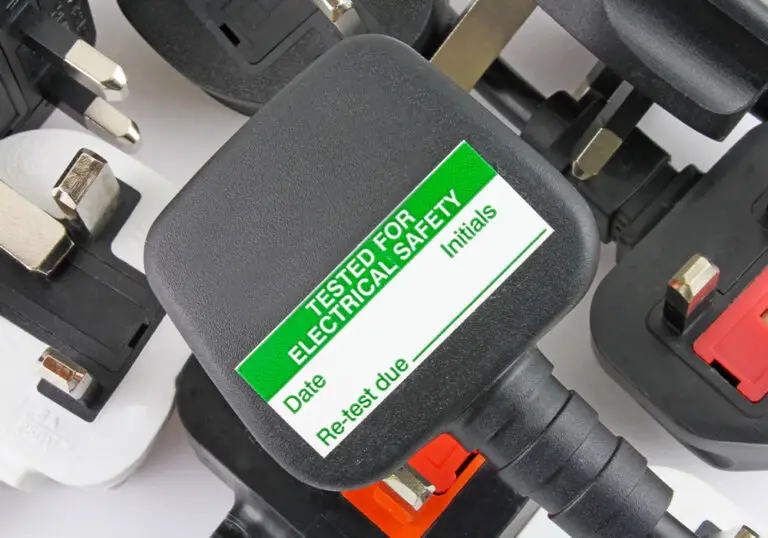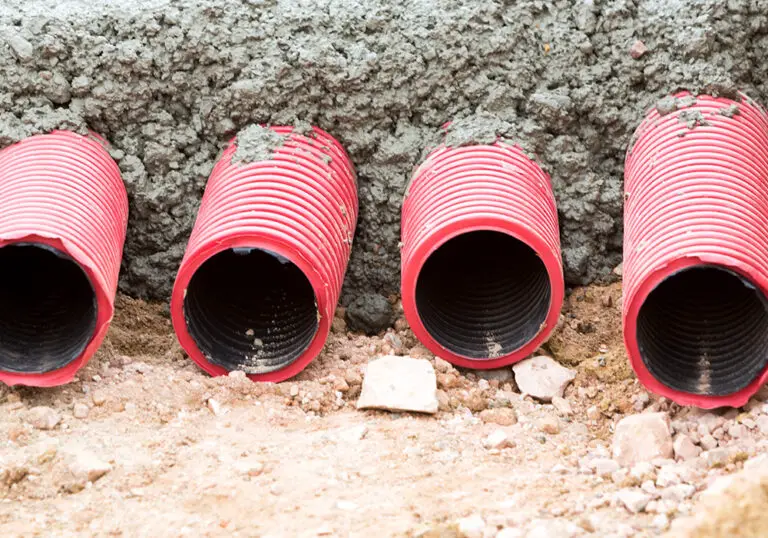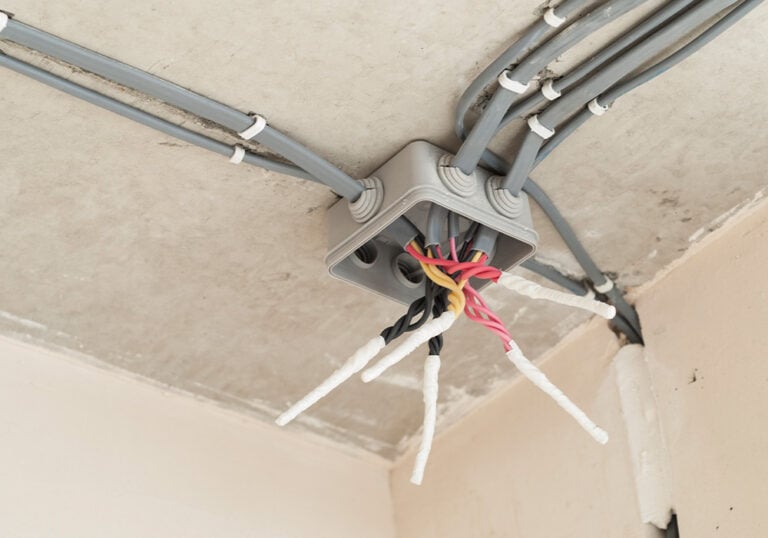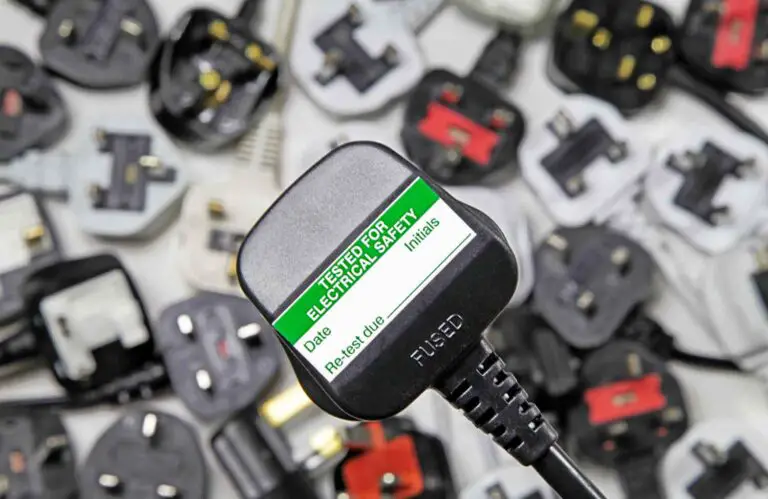How Deep Should You Bury Electrical Conduit?
Burying electrical conduit is an essential step in maintaining the safety and integrity of your home and outdoor electrical wiring systems. By protecting the electrical cables within a conduit and burying it deeply enough, you ensure that the cables remain undisturbed by everyday activities and protected from environmental elements, such as weather and wildlife.
Electrical conduit should be buried at a depth that meets UK regulations and NEC (National Electric Code) standards. In general, this means burying rigid, non-metallic conduit like PVC at a depth of 18 inches. However, specific cases, such as when supplying power to sheds, may require a shallower depth of around 6 inches. It’s crucial to adhere to these regulations to maintain safety and avoid potential complications with your electrical wiring system.
Key Takeaways
- Burying electrical conduit ensures safety and protects cables from environmental elements
- The National Electric Code and UK regulations prescribe an 18-inch burial depth for PVC conduit
- Some specific situations, like supplying power to a shed, may call for a shallower burial depth of 6 inches
The Importance of Burying Electrical Conduit
Burying electrical conduit is crucial for several reasons, including safety, protection, and longevity of your electrical system. When you properly bury the conduit, you minimise the risks of accidents, such as tripping hazards and damage to the conduit itself.
Firstly, safety is paramount when dealing with electricity. By burying electrical conduit, you help prevent exposure to live wires, which can cause injury or even death. Additionally, you prevent the likelihood of accidental contact with wires that could result in an electrical shock or fire. Underground conduit installations reduce the chances of electrocution for children and pets who could accidentally tamper with exposed wiring.
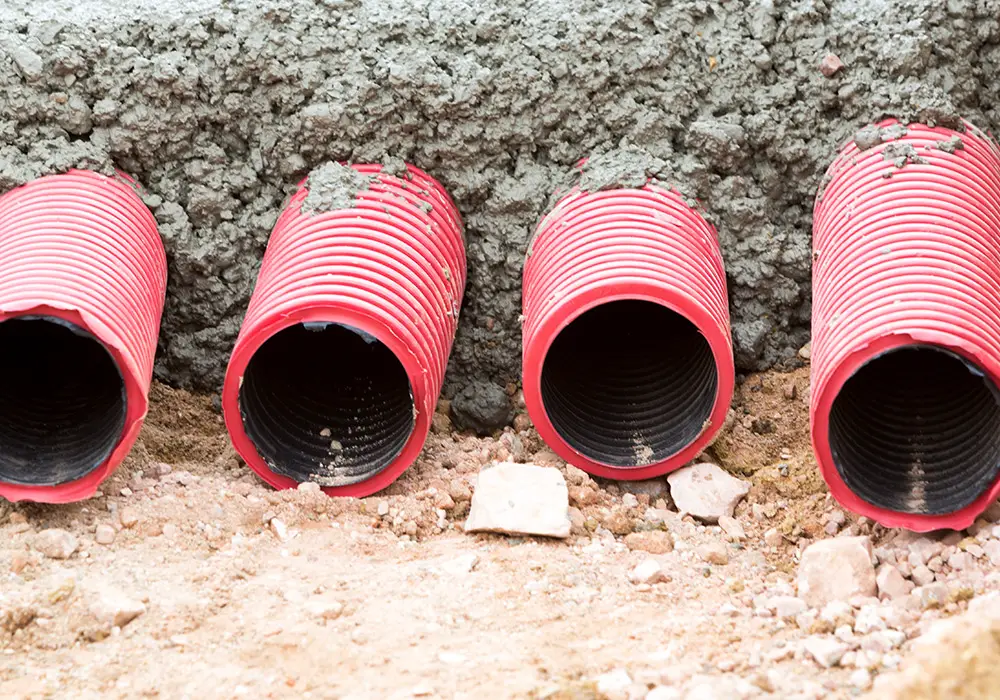
Secondly, proper burial provides protection to the electrical conduit. When wires and cables are left exposed, they are susceptible to weather-related damage, such as corrosion, moisture, or extreme temperatures. Burying conduit ensures the electrical system’s components are shielded from these elements, allowing for better performance and reduced maintenance requirements.
Lastly, burying electrical conduit increases the longevity of your electrical system. Exposed cables may become damaged or deteriorate over time, which can lead to costly repairs or replacements. By burying the conduit, you help protect it from environmental factors and physical damage, ensuring your electrical system functions optimally and safely for years to come.
In conclusion, burying electrical conduits is essential for improving the safety of your property, protecting your electrical system from environmental damage, and ensuring its long-term reliability. Be sure to follow the recommended burial depths and guidelines to achieve these benefits.
Determining the Correct Depth
The depth at which electrical conduit should be buried depends on various factors such as the type of conduit, location of installation, and local building codes. As a rule of thumb, conduit should be buried at a depth of at least 18 inches (45.72 centimeters), but in some cases, it may need to be buried deeper.
When planning your project, always check and adhere to local codes and regulations. In the UK, BS 7671 states cables, conduits, and ducts buried in the ground must be at a sufficient depth to avoid any reasonably foreseeable disturbance of the ground. A depth less than 0.5 meters (50 centimeters or 19.69 inches) is inadvisable.
Considerations for determining the ideal depth include the type of soil in your location and the likelihood of anyone digging or working in the area. You’ll want to ensure the conduit is deep enough to withstand potential environmental changes and disturbances.
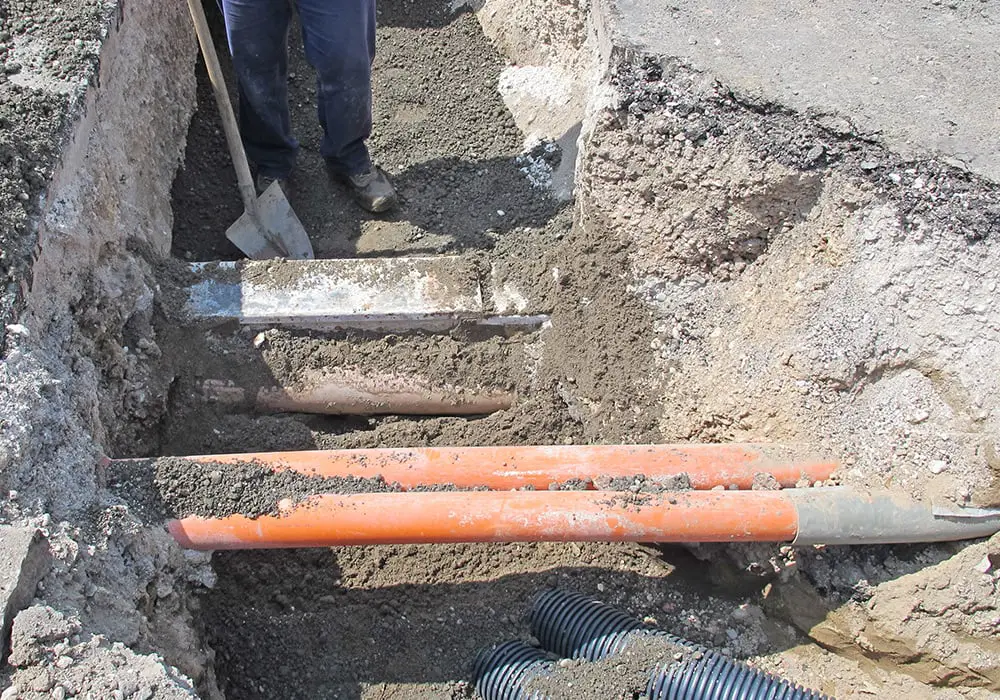
Another factor that affects the depth is the type of conduit used. Rigid metallic and PVC conduits offer varying degrees of protection against physical damage, with PVC conduits being more flexible but somewhat less resistant to damage compared to metallic conduits. Your choice of conduit material will impact how deep it needs to be buried to ensure safety and durability.
Finally, always consider the specific requirements of the electrical conductors and cables to be installed within the conduit. They may have their own specifications for depth or separation from other utilities, which will impact the overall depth at which your conduit should be buried.
By taking into account local codes, environmental factors, the type of conduit, and the needs of the conductors, you can determine the appropriate depth to bury your electrical conduit.
UK Regulations for Burying Electrical Conduit
When dealing with electrical conduits in the UK, it is essential to adhere to the regulations for depth. The correct depth ensures safety and reduces the risk of accidental damage to cables.
For armoured cable used to supply power to sheds or outbuildings, a shallower depth of 150 mm (6 inches) is acceptable. It is also permitted to clip armoured cable to a fence in your garden, with no specified height regulations.
When burying electrical conduit more generally, the National Electrical Code (NEC) sets out the required depth. It specifies that a depth of 305 mm (12 inches) should be used for underground wires, with an option to reduce this to 152 mm (6 inches) if you secure the cables with a 50 mm (2-inch) concrete cover.
When selecting a conduit for direct burial, some types are more suitable than others. PVC conduit, for example, is resistant to moisture and offers good protection from corrosion. In contrast, rigid metal conduits are best suited for heavy-duty applications, as they provide excellent mechanical protection.
One common mistake to avoid when burying electrical conduits is overlooking the necessary tools and materials. Ensure you have a reliable method for digging the trench, such as a trenching shovel or powered trencher, as well as a means of securing the cables, whether it be cable cleats or cable ties.
To summarise, when burying electrical conduit in the UK, adhere to the depth requirements set out by the NEC and select suitable conduit types based on your specific project needs. Ensure you have the appropriate tools and materials to complete the task safely and efficiently.
Types of Conduit Suitable for Burying
When burying electrical conduits, it’s essential to select the appropriate type of conduit for your needs. The main types suitable for burying underground include Rigid Metal Conduit, Non-Metallic Conduit, and Liquid Tight Flexible Conduit. Each type of conduit has its advantages, which are discussed in more detail in the following subsections.
Rigid Metal Conduit
Rigid Metal Conduit (RMC) is constructed from galvanized steel and features threaded fittings. This type of conduit is extremely strong and durable, making it a popular choice for underground use. Although RMC tends to be more expensive in terms of labour and materials, its strength provides a significant advantage when considering potential damage from digging or impact. In some cases, aluminium may be used in the construction of RMC, but it often requires additional coating for increased corrosion resistance.
Non-Metallic Conduit
Non-Metallic Conduit is another suitable option for burying electrical conduits. This conduit type is typically constructed from PVC, providing enhanced corrosion resistance compared to metal conduits. Non-metallic conduits are less expensive than their rigid metal counterparts, both in terms of materials and installation; however, they may not be as sturdy. Despite this, non-metallic conduits are widely used in residential and commercial applications due to their ease of installation and versatile use.
Liquid Tight Flexible Conduit
When flexibility is a key requirement, Liquid Tight Flexible Conduit (LTFC) is a suitable choice. LTFC is typically constructed with a flexible, waterproof PVC outer jacket and metal spiral reinforcement, combining the benefits of non-metallic conduit’s corrosion resistance and metal conduit’s strength. This type of conduit is ideal for areas requiring frequent movement, such as connections to machinery or for navigating tight bends. Although installation costs for LTFC might be higher than for standard non-metallic conduits, the added benefits of flexibility and water resistance can make it a worthy investment for specific applications.
Procedure for Burying Electrical Conduits
Planning the Route
Before you start burying the electrical conduit, plan the route carefully. Consider the location of any existing utility lines, underground structures, or obstacles. You’ll need to avoid crossing, disrupting, or interfering with these during the installation process. Mark the planned route using stakes or spray paint for a clear and easy-to-follow path.
Digging the Trench
When you’re ready to begin, dig a trench along the planned route for the electrical conduit. The depth of the trench should be at least 600mm (approximately 2 feet) for domestic dwellings, as per standard regulations. Make sure the trench is wide enough to accommodate the conduit and provide a proper sand or loose roadstone base. This base helps protect the conduit from potential damage during backfilling.
Laying the Conduit
After preparing the trench, lay the electrical conduit on the sand or loose roadstone base. Use PVC conduit for non-metal installations, ensuring it’s properly threaded and of suitable thickness. Avoid exposing PVC conduit to direct sunlight, as it has low UV stability. When laying armoured cable, ensure it is well-protected and close securely with compatible compression connectors or couplings.
Backfilling the Trench
Once the conduit is in place, cover it with an additional layer of sand or loose roadstone mixture. This layer should be thick enough to provide further protection to the conduit, while allowing for easier access in case of future repairs or modifications. Carefully backfill the trench with soil, avoiding any sharp stone or debris that could cause damage to the conduit. Tamp down the soil to eliminate air pockets, ensuring a stable and secure installation.
Safety Considerations When Burying Electrical Conduit
When burying electrical conduit, it’s essential to consider safety measures to protect both yourself and the electrical system. Here are key safety considerations to keep in mind:
Choose the Right Type of Conduit: Select the appropriate conduit material for your needs. Rigid metal conduit, made of galvanized steel or aluminium, offers higher strength but is more expensive. Non-metallic conduits are more cost-effective and easier to install, but provide less mechanical protection.
Follow Appropriate Burial Depth: The depth at which you bury electrical conduit depends on the type of conduit and surface material. For example, metallic conduits are stronger and can be buried at shallower depths. An appropriate burial depth prevents accidental contact with the conduit and ensures it remains protected from external factors.
Comply with Local Regulations: Familiarise yourself with any relevant regulations and standards, such as BS 7671 for electrical installations in the UK. This applies to aspects like burial depth, proximity to other cables, and safety precautions within rooms containing baths or showers.
Avoid Excessive Bending: Conduit should be laid as straight as possible with gentle curves where necessary. Avoid sharp bends that could compromise the integrity of the conduit and lead to potential safety hazards.
Properly Insulate and Support: When running armoured cable along fences or other structures, ensure that it’s securely clipped and insulated to prevent damage and accidental contact. Pay attention to the height of the cable as well; it can be at ground level or higher, depending on your needs.
By taking these safety considerations into account when burying electrical conduit, you can minimize risks and create a reliable electrical system for your property.
Troubleshooting Buried Electrical Conduit
When dealing with buried electrical conduit, you may encounter challenges that require troubleshooting. This is particularly important to ensure the longevity and safety of your electrical system. This section will provide you with essential tips and insights for effectively troubleshooting buried electrical conduits.
One common issue you should be aware of is ensuring the proper burial depth. According to the National Electrical Code (NEC), conduit should be buried at a depth of at least 12 inches (30 cm) or 6 inches (15 cm) if secured with 2 inches (5 cm) of concrete. In the UK, the minimum required burial depth for cables from the distribution network operator (DNO) is 600mm, or roughly 2 feet. Adhering to these guidelines will help you avoid accidental damage to the conduit and the electrical system.
Another vital factor during installation and maintenance is to choose the correct type of conduit. PVC conduit, one of the most common non-metal electrical conduits, comes in various thicknesses and is lightweight, but it should not be exposed to direct sunlight due to its low UV stability. Be sure to select a conduit suitable for your specific application and environmental conditions.
During the installation process, verify that you use the appropriate tools and materials. Some common mistakes to avoid include using the wrong type of conduit or inadequate joint connections, which can lead to poor performance or even damage. Always consult the manufacturer’s guidelines for any materials and components you use in your electrical system.
In the event that you experience problems with your buried electrical conduit, such as a loss of power or unusual electrical behaviour, consider inspecting the buried section of the conduit for signs of damage or corrosion. When doing so, remember to take all safety precautions, such as turning off the power at the source and utilising appropriate protective gear. If you are unable to identify or resolve the issue yourself, it is advisable to consult a professional electrician for assistance.

